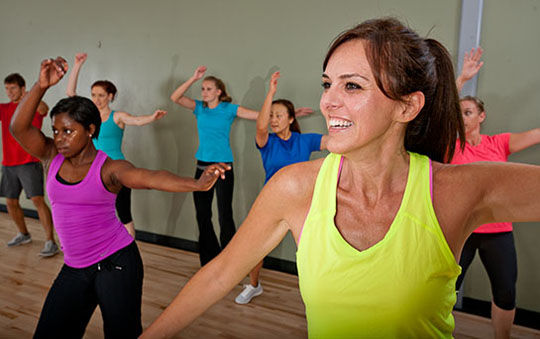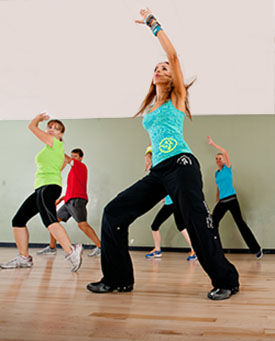
By Lawrence Biscontini, M.A.
If you are a newly certified group fitness instructor, or even if you’ve been working in the industry for a while, you know that finding a successful career path today can be incredibly challenging—there really aren’t any clear-cut, proven steps to establishing your career. To be sure, career instructors can try to follow in the footsteps of their favorite instructors, but the fitness industry, which is constantly changing, doesn’t support this approach anymore. Still, I have found that there are ways to create and build a successful—and fulfilling—career as a group fitness instructor. Here are my top five tips:
Tip 1: Find a Mentor
Working with a mentor can open doors, prevent mistakes and save time overall. Find someone you consider to be successful in your area of expertise and then make a creative offer for mentoring. Many times, professionals on a budget assume that they cannot afford mentors before they’ve even inquired about rates and different types of payment plans. Furthermore, sometimes industry “trades” work well, such as trading mentoring time for graphic design or other services.
Tip 2: Become Untouchable
To be beyond reproach in the field of fitness, fitness professionals should aim to be both professional and popular on all accounts. “Popular” includes being able to pack in students to group fitness class experiences regardless of the timeslot or discipline. Here are some great ways to increase the popularity of your classes:
- Consistently deliver a product that far exceeds anything currently being offered within the local area by guaranteeing students results, helping them feel successful regardless of their level and creating both a meaningful and motivating experience, every time.
- Create anticipation for upcoming classes by using social media to engage students and encourage them to interact by posting songs they want to hear or favorite exercises they want to do. Alternatively, you can post photos, text and video clips of new exercise patterns your participants will do, new equipment they will use, or a surprise gift they will receive for attending a particular class.
- Blend the right amount of predictability and newness in each class to allow students to master new movements without becoming bored.
- Ethically entice current devotees to use word of mouth consistently to bring new faces to class.
“Professional” includes being credentialed and ethical. Methods for increasing professionalism include:

- Always arrive early enough before class to create a “pre-show” to intermingle with guests, note individual progresses over time, get to know their names and create a buzz about the ensuing workout.
- Always speak in a positive or neutral light about other fitness professionals.
- Be credentialed in the specific disciplines you are teaching.
- Stay on top of frequently changing industry standards and guidelines—this should surpass simply avoiding contraindicated exercises. This also includes following currently accepted guidelines for specific disciplines or movement patterns.
- Dress the part to complement the type of classes you are leading.
Tip 3: Specialize (If it Works for Your Demographic)
Deborah Puskarich, Group Exercise and Intern Director for the Cooper Fitness Center at Craig Ranch in Plano, Texas, hires instructors regularly. “You need to be sure to have an internationally accepted group or personal trainer certification that serves as a baseline level of credential attesting to your preparation overall, and then at least one credible ‘specialty credential’ in your area of expertise.” The advantage to specializing in a specific modality or discipline, such as group fitness for kids or restorative yoga, is that local fitness consumers will see such instructors as fitness authorities in specific areas. Conversely, there are some disadvantages to specializing—being pigeon-holed into one discipline when a market may already be saturated diminishes opportunities for career growth. Therefore, choose your specialty carefully.
Tip 4: Continuing Education: Know Your ABCs
A is for ACE’s website. Explore the resources available to you from ACE. Starting in 2013, for example, ACE allows any fitness professional or consumer to listen to any of its fitness webinars from anywhere, for free. Other options on the website include connecting to fitness professionals, posting questions to industry experts, getting advice about career growth, and learning new exercises and movement patterns, all for free.
B is for Balance. The best instructors find a balance between theory and practice. Manuel Velázquez, lead instructor of the prestigious Rancho La Puerta Spa in México, agrees. “People love coming to the spa and taking up to eight classes per day. To keep them interested, we have to find the right balance between fun and function, between entertainment and education, and between working OUT and working IN.” To be sure, flashy moves and winning music motivates consumers to keep taking group fitness classes, but balancing that excitement with research-based moves keeps everyone safe and maximizes results in the minimum amount of time.
When seeking continuing education, instructors should always seek a healthy balance of theory and practice so they can take back to their students the most research-based programming. The risk of spending too much time studying theory is that instructors end up with very few practical skills when they go back to the studio. On the other hand, the biggest concern with concentrating solely on finding new exercises and movement patterns is that (1), the most flashy exercises oftentimes have little research support; and (2), students constantly presented with new exercises learn to demand change constantly. Instructors with an ideal blend of theory and practice learn how to develop their own changes to movements without having to constantly focus on offering new and novel exercises.
C is for Conventions and Courses. Seeking continuing education from reliable resources keeps instructors and trainers at the top of their game. When faced with a plethora of options of conventions, instructors should ask their most trusted mentors for recommended conventions. The American Council on Exercise offers its own events, and other largest North American events include ideafit.com, scwfitness.com, and canfitpro.com. Occasionally, these organizations offer scholarships to attend their events; I also offer several scholarships on my website, where you can find an online application.

In addition to large, professional training conferences, distance learning also is a viable option, particularly for those who may not be able to travel. They do, however, lack much of the excitement and the networking opportunities that live events offer. Such courses range from hour-long seminars to full-day events in which participants can ask questions and interact with other participants.
When partaking in either live events or distance learning, Valerie Grant, a Pilates Method Alliance-certified fitness presenter based in Philadelphia, recommends keeping a journal with a specific purpose in mind. “Of course, you get the notes that these courses give you, but it’s important to put the most useful stuff in your own words, immediately. Make a habit of writing down three things to DO and three things to SAY in every workshop you take.” Journals can also help you keep track of subsequent continuing education.
Tip 5: Edu-tain
Instructors and trainers who are in the habit of teaching their clients the reasons behind every move can easily fall into the trap of overeducating instead of keeping the class moving. Conversely, leaders who constantly get involved in the entertaining aspects of the class experience, and get wrapped up things like the movements, music, lighting and volume of the class, may find they have no time to connect with their students on any level that transcends movement. Your goals as an instructor should be to edu-tain, to offer a complementary blend of theory and practice so that students both learn and experience simultaneously.
______________________________________________________________________
 Lawrence Biscontini, M.A., is a Mindful Movement Specialist who has won multiple industry-recognized awards. He is currently serving as the Senior Consultant for Group Programming for the American Council of Exercise (ACE) and the BOSU Development Team. He is a Registered Yoga Alliance Teacher and a contributing author to numerous industry magazines. Find Lawrence at www.findlawrence.com.
Lawrence Biscontini, M.A., is a Mindful Movement Specialist who has won multiple industry-recognized awards. He is currently serving as the Senior Consultant for Group Programming for the American Council of Exercise (ACE) and the BOSU Development Team. He is a Registered Yoga Alliance Teacher and a contributing author to numerous industry magazines. Find Lawrence at www.findlawrence.com.